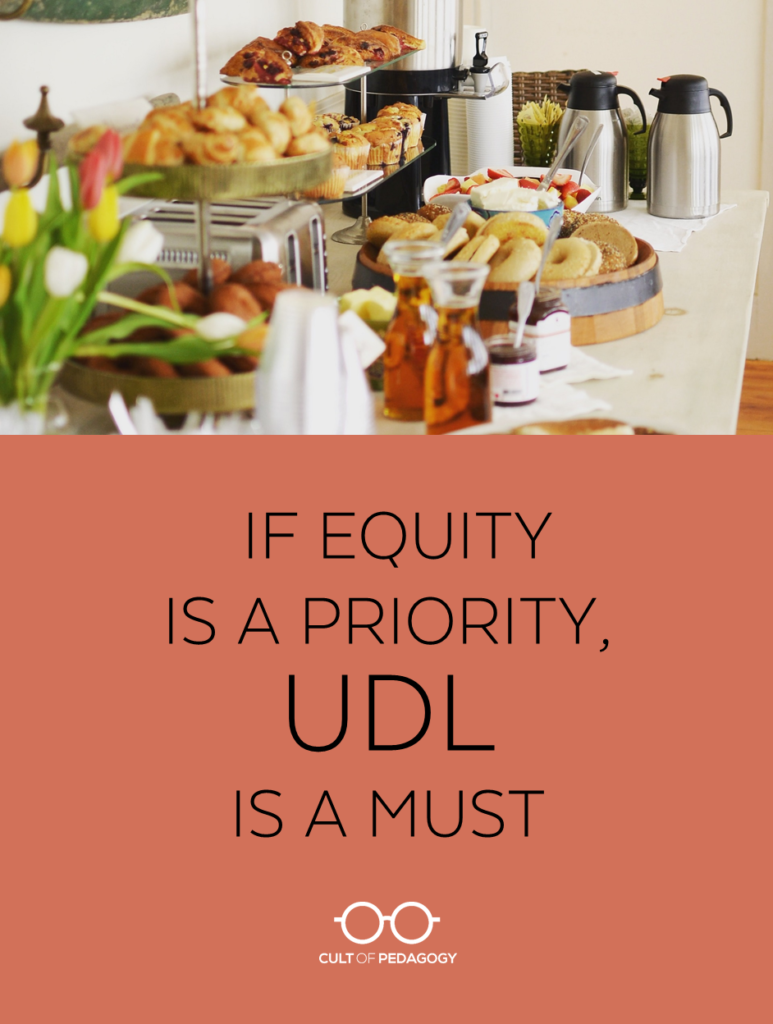
Listen to the interview with Katie Novak and Mirko Chardin:
Sponsored by Hapara and Kiddom
This post contains Amazon Affiliate links. When you make a purchase through these links,
Cult of Pedagogy gets a small percentage of the sale at no extra cost to you.
As a teacher, I loved the annual PTO teacher appreciation breakfast: tablecloths featuring pencils, hearts, and shiny red apples, bouquets of pink mini carnations, and a coffee and tea cart fit for a barista. And the buffet! Like mead halls of yore, long banquet tables were lined with fruit salad, homemade quiches, scrambled eggs, miso soup, and gallo pinto. Bagels, croissants, chapattis, and churros sat atop a bread table. Little folded cards identified casseroles that were gluten-free or vegan. Options for everyone! I wanted to sample every single one.
A school down the street didn’t have it so good. Their breakfast served a single option—a bacon, egg, and cheese sandwich on a biscuit. No substitutions.
Now, I personally love a good ol’ brekkie sammy, but it certainly won’t meet everyone’s needs. Some staff members may be vegetarian, lactose-intolerant, or gluten-free. Some may be watching their waistlines. And some will just think that the sandwich is G.R.O.S.S. We all can predict the outcome. Many will leave hungry, frustrated, and needless to say—unappreciated.
The bacon/egg/cheese saga represents the one-size-fits-all scenarios we often see in our classrooms: Every student is expected to read the same book at the same pace, listen to the same lectures, and complete the same math problems using the same materials. These inflexible solutions expect compliance and favor students who don’t face significant barriers to traditional learning. Many of the “tried and true” techniques and curriculum in classrooms perpetuate privilege rather than focusing on learning, autonomy, and empowerment.
When we design the same learning pathways for all learners, we might tell ourselves we are being fair, but in fact, single pathways are exclusionary. Beverly Daniel Tatum, author of the critically acclaimed book, Why Are All The Black Kids Sitting Together in the Cafeteria? And Other Conversations About Race, challenges us to focus on impact over intentions. It may not be our intent to exclude our learners, but the reality is that many students do not have opportunities to learn at high levels or to access curriculum and instruction that is accessible, engaging, culturally sustaining, and linguistically appropriate.
Luckily, there is a framework that rejects these one-size-fits-all solutions and empowers educators to proactively design learning experiences so all students can increase their brainpower and accelerate and own their learning. The framework is Universal Design for Learning (UDL).
UDL is a framework for designing learning experiences so students have options for how they learn, what materials they use, and how they demonstrate their learning. When implemented with a lens of equity, the framework has the potential to eliminate opportunity gaps that exclude many learners, especially those who have been historically marginalized. If we want all students to have equal opportunities to learn, we have to be incredibly purposeful, proactive, and flexible. UDL creates a learning environment that is the least restrictive and most culturally responsive, trauma-informed environment for all students.
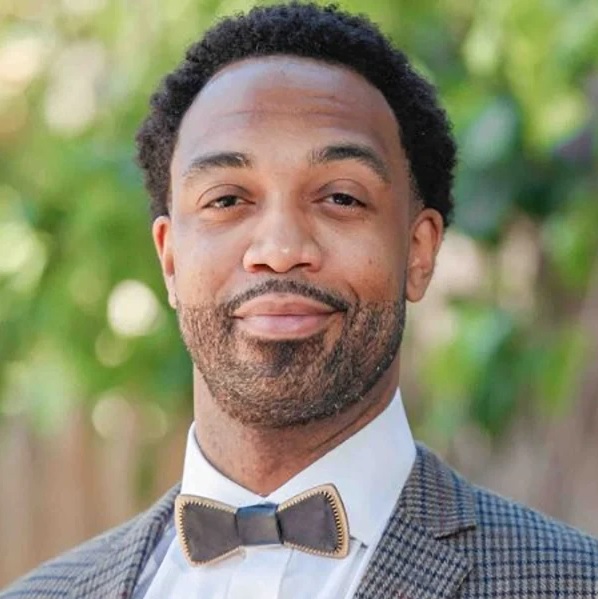
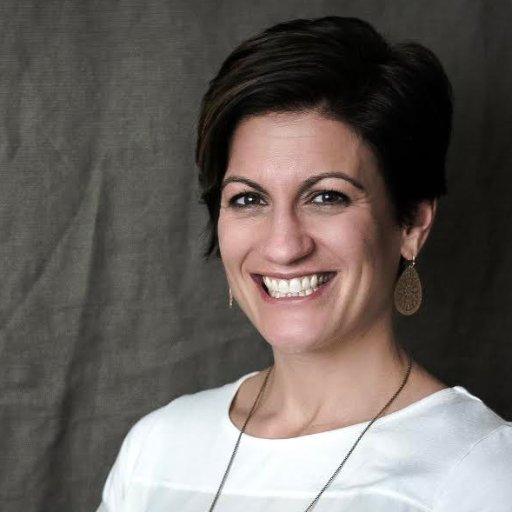
CORE BELIEFS OF UDL
This work begins with asset-based beliefs about students and the power of design to eliminate barriers. A UDL Practitioner believes:
- Variability is the rule, not the exception. Students may need to learn in different ways, using different materials, and share what they have learned in different ways to reach the same goals.
- All students can work toward the same firm goals and grade-level standards when provided with adequate challenge and support.
- All students will become expert learners if barriers are removed and they are given opportunities to self-differentiate.
Belief 1: Variability
Variability is the unique mix of skills, interests, needs, and preferences each and every learner brings to the classroom. Variability goes beyond differences between students and explores differences within students, based on context. Because of variability, what students need is ever-changing and evolving. So providing options for students to reflect on the barriers they are facing and choose pathways that best meet their needs is critical to build self-awareness and expert learning.
In traditional instruction, many educators attempt to define how students learn with one-dimensional labels. For example, many educators will ask me, “What does UDL look like for English language learners/black and brown students/students with disabilities?” My answer is always the same, “The students in those groups are not the same and they don’t need one-size-fits-all solutions.”
Let’s connect back to the breakfast buffet. Imagine you are labeled as a member of the “vegan group.” As a result, every day you and the other vegans have plates set aside for you with sliced tomatoes and plain oatmeal. Here’s the thing—not all vegans like or eat the same thing. You will want choices too and you will likely make different decisions depending on the day, your mood, and how your tummy feels. Intrapersonal variability matters just as much as interpersonal variability. And if none of the foods work for you, you will definitely need an opportunity to share what you need.
Belief 2: Firm Goals, Flexible Means
Every student can learn at high levels. When creating a universally designed learning experience, educators should ask themselves: “At the end of this lesson, unit, or professional development series, what do my learners have to know or what do they need to be able to do?” Once you identify the firm goal, ask yourself, “Based on the variability in my class, what barriers may prevent learners from working toward that goal and how can I eliminate those barriers through design?”
For example, if the firm goal is “Write arguments to support claims with clear reasons and relevant evidence,” you may predict that some students will struggle with organization. Worry not! You can create a buffet with flexible means to support learners. If you proactively provide a graphic organizer, an annotated exemplar with notes about organization, a resource that includes words, phrases, and clauses to help clarify the relationships among claim(s) and reasons, and the opportunity to sign up for small group instruction on organization, you can empower students to choose what they need to organize their writing.
Belief 3: Expert Learning
In his book, Learning to Choose, Choosing to Learn, author Mike Anderson discusses the concept of incorporating student choice into every lesson. Many educators are afraid of handing over the reins to their students, believing they won’t make the best choices. The truth is they are right to be afraid; students may make poor choices about their learning, particularly when they are first given this power.
For example, a student may choose to work in a group with his friends in which he becomes distracted instead of working alongside the teacher, where he would have been more successful. But the evaluation of that choice is where the real teaching moment comes into play. Through Anderson’s “choose, do, review” method, teachers transition their roles to the facilitator and can provide feedback that guides students to understand and self-evaluate their choices, determine what works for them and what doesn’t, and give them opportunities to make better choices in the future and provide feedback about learning design.
If students don’t have these opportunities to “choose, do, review” their way to expert learning, they will become what Zaretta Hammond has coined as “dependent learners.” Dependent learners are overly reliant on the teacher to carry the load of cognitive tasks and are unsure of how to tackle new tasks because they aren’t given opportunities to learn how to be expert learners.
UDL IN ACTION
Imagine this scene in a 6th-grade health classroom: Students are sitting quietly at their desks. The learning target written on the board notes that students will identify ways to reduce their risk of spreading or contracting communicable disease. The agenda outlines classroom activities: (1) watch a CDC video and (2) write an essay on how to reduce the risk of spreading and contracting COVID-19. The lesson is aligned to grade-level standards and features a high quality resource, so what is the problem? The learning experience will not meet the needs of all students because it is one-size-fits-all, so let’s give it the UDL treatment. For a lesson to truly be “universally designed,” it must meet the following criteria:
Provide Multiple Means of Engagement
Learners differ in the ways they can be engaged or motivated to learn. Because there is not one means of engagement that will be optimal for all learners; providing options to build interest and commitment is essential. At the beginning of the class, the teacher projects a list of communicable diseases including the common cold, strep throat, COVID-19, and Influenza A (the flu). Each disease is paired with a visual. Some learners take out their phones to look at their throats and ask their friends, “Does my throat look like that?” The teacher asks if anyone wants to add a communicable, or spreadable, disease to the list. One student offers, “mono,” so she writes it down.
For the next 10 minutes, students have the option to work independently, with a partner, or in a small group with the teacher to list as many symptoms as they can for at least one of the diseases. Students have the option to write words or draw images to represent symptoms on a provided graphic organizer. As they work, they are encouraged to use their devices for research and to find a place conducive to their learning. Two students work at a standing desk while others grab clip boards and gather on the floor with their devices.
Provide Multiple Means of Representation
The second principle of UDL reminds educators to provide multiple means of representation to build knowledge and comprehension in all learners. Not all learners comprehend information in the same way, have the same background information or funds of knowledge, or have access to the same language. When teachers present information, they often use a single representation. This is often done in a lecture, by playing a video, assigning text, or teaching vocabulary, etc. Because there is significant variability in students, they differ in the information they need to learn.
In the health lesson, after students complete the activator, there is a mini-lesson unpacking target vocabulary: risk, communicable disease, and community spread. One student’s father is a nurse, so the teacher arranges for a short Zoom call where Dad talks about the importance of washing hands and wearing masks. The closed caption feature is used and students are encouraged to ask questions.
After a short discussion, the teacher provides options for students to learn more about how to prevent the spread of communicable disease: watch the CDC video in English or Spanish, read an article on Newsela, review pamphlets from the nurse’s office, or explore a combination of these resources. They are provided with essential questions to support their learning. As students work, the teacher checks in with each of them, asks questions, and provides feedback.
Provide Multiple Means of Action and Expression
It is devastating when students aren’t able to express their understanding because of inflexible assessments. Traditionally, students have been asked to share their understanding using only a single pathway, like a multiple-choice test, essay prompt, and/or project without any flexible scaffolds or supports. When teachers provide students with multiple options that are authentic and personalized, learners are able to practice executive functioning skills as they analyze the task and choose the best option to demonstrate that they met the intended outcome.
After learning about how to reduce their risk of spreading or contracting communicable disease, students are provided with numerous options to share what they have learned. They can write a response, record a video or podcast, create a pamphlet or infographic, or suggest an alternative. The teacher provides a word bank with the target vocabulary, a single-point rubric, and a checklist so students can self-assess their work before submitting it. One student asks if he can write and produce a rap as long as it meets the rubric. “Absolutely,” the teacher replies. “I can’t wait to hear it.”
ARE UDL AND DIFFERENTIATION THE SAME?
You may be reading this and thinking, “This sounds a lot like differentiated instruction.” The frameworks are similar, and complementary, but they are not the same.
Carol Tomlinson leads the field of differentiated instruction. As she shares in her book The Differentiated Classroom: Responding to the Needs of All Learners, teachers in a differentiated classroom begin with their current curriculum and engaging instruction and then adapt the content, process, product, and environment to ensure that students receive the targeted intervention, support, and enrichment they need. This responsiveness is incredibly important, but may not set students up to reflect on their learning and make choices for themselves.
In the breakfast buffet analogy, you don’t want to be a part of the “vegan group” where decisions are made for you. Even with the buffet, hosts need to be responsive and reflective, noting when some people aren’t eating and figuring out how the buffet could be designed differently the next time. When differentiation is combined with the practices and principles of UDL, students have opportunities to reflect, make choices, and build ownership of their learning; they also benefit from more explicit support when necessary.
Unlike differentiation alone, UDL empowers students to self-differentiate their learning and build autonomy and independence; this sends a powerful message. In her book Antiracism and Universal Design for Learning, Andratesha Fritzgerald notes that this kind of design honors our students, that when we provide them with choice and voice, we communicate these things:
- You are more important than the systems we serve.
- You are more important than my personal preferences.
- You are more important than the way the content is packaged.
- I am willing to learn about you to help you reach your life goals.
- You are important and I will honor you with instruction that holds you accountable and empowers you to take ownership of your own learning.
Proactively designing curriculum and instruction through the lens of UDL, and supplementing that design with differentiated instruction, is a pathway to equity—one that will have an incredible impact on learners.
As Mirko Chardin and I shared in Equity by Design: Delivering on the Power and Promise of UDL, “Educators hold incredible power: power to design learning experiences, power to set expectations for students, power to elevate and celebrate student voices, power to inspire and motivate students, the power to create consequences, and the power to allow for choice and personalization. We have to understand that all of us carry that power and privilege and we must use it as a tool to confront and dismantle inequities so all students have equal opportunities to learn.”
Universal design is one path toward dismantling those inequities. Start your UDL journey now.
Learn More
As a next step, here is a buffet of high-quality resources to learn more about UDL and educational equity. Just like the Teacher Appreciation Breakfasts that I loved so much, check out your options, and choose what’s best for you. And if you’re like me and you want to try a little bit of everything, treat yourself!
Read It
- Read this blog, written by Mirko Chardin and I, that shares that the time for equity (and UDL!) is now.
- Read Chapter 1 in UDL Theory and Practice: Re-Envisioning Education through UDL (free with free login). The book is a universally designed text book, so you can read, have it read to you, or watch videos that explore concepts more deeply.
- View a PDF copy of the UDL Flowchart, which is a tool to think about UDL lesson design. If you’d like to read a blog that introduces the flow chart, you can access it here.
- View the UDL Progression Rubric to determine what UDL looks like at each phase of implementation.
- Use the UDL Implementation Rubric to consider where your current practices are within UDL. There are no right or wrong answers. This is simply an opportunity to reflect on your current implementation. Choose the descriptor that best meets your practice and consider how you can continue to grow in UDL to create more equitable, personalized learning experiences for your students.
- Read “Equity in Our Schools: A Pretty Little Lie” an article co-written with Andratesha Fritzgerald, the author of Antiracism and Universal Design for Learning.
Listen to It
- Listen to this podcast on Cult of Pedagogy, Ten Ways Educators Can Take Action in Pursuit of Equity, featuring Pedro Noguera, Distinguished Professor of Education at the Graduate School of Education and Information Studies at UCLA.
- Listen to this podcast from Paula Martin Johnson, where she shares concrete strategies for how educators can create a climate and curriculum that reflects students’ racial and economic backgrounds, languages, religions, funds of knowledge and family structures.
Watch It
- Watch a webinar with Andratesha Fritzgerald: Sharing Stories: Antiracism and Universal Design for Learning (58 minutes)
- Watch this webinar (60 minutes) that Mirko Chardin and I presented for PBS Learning Media and WBH introducing the Universal Design for Learning (UDL) framework.
- If you’re looking for an analogy to explain what UDL is to your colleagues, and how it is different from Differentiated Instruction, watch this 3 minute video on the dinner party analogy.
Join our mailing list and get weekly tips, tools, and inspiration that will make your teaching more effective and fun. You’ll get access to our members-only library of free downloads, including 20 Ways to Cut Your Grading Time in Half, the e-booklet that has helped thousands of teachers save time on grading. Over 50,000 teachers have already joined—come on in.

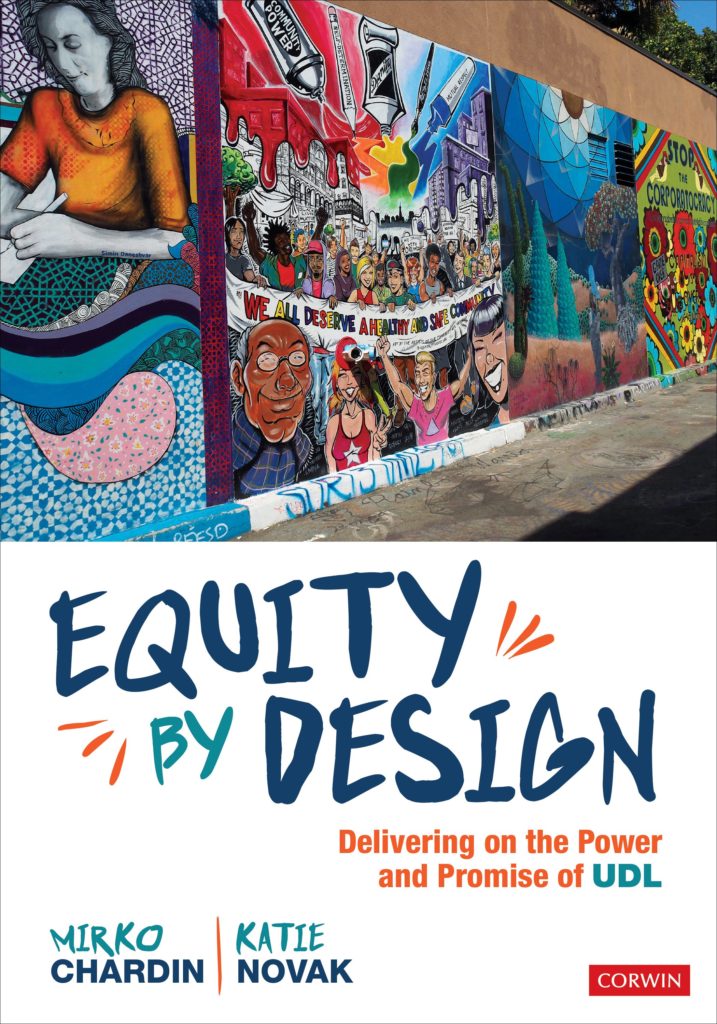

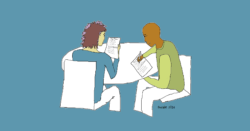
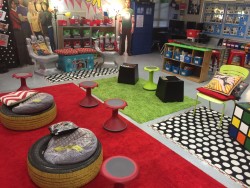

I have some questions. In UBD (Understanding by Design) and PBL, everything in a unit is designed to prepare learners to succeed on the project–to equip them to complete the project skillfully. If students are creating a video, podcast, or writing a letter, those three performance tasks require very different skills and knowledge. Teaching and scaffolding those tasks (as opposed to just assigning the tasks) is incredibly involved. I question whether UDL really does support all learners, especially dependent learners. I am not advocating for procedural scaffolds (Jane Schaffer, algorithmic teaching in math, etc.). I am talking about using a cognitive apprenticeship model that allows students to perform at high levels, but that requires a lot of instruction so students learn the concepts AND the underlying skills. For example, teaching students how to create a high quality infographic is very different than teaching them how to do a high quality podcast. Neither can be done in a single lesson. I am curious as to how a teacher might deeply teach/appropriately scaffold students to do projects/tasks that are so incredibly different?
Great question! UDL is all about “firm goals and flexible means.” So, for example, if the standard is focused on writing, all students will produce writing. In the example in the blog, the goal wasn’t the product as much as a reflection of an understanding of content. In this, students had multiple options and choices to share their understanding. To scaffold options like a podcast, a practitioner may create a “firm goal,” focused on speaking and listening, where students examine multiple effective podcasts, graphic organizers to structure podcasts, and also to practice recording podcasts to get feedback. After a lesson like that, a podcast could be provided as an option for future content standards. It definitely comes back to articulating unit objectives and essential questions and determining barriers that may prevent students from meeting the standards, and providing options there. It definitely can align with both UbD and PBL. Hope this provides some clarity!
As a pre-service teacher I was really interested to read about UDL. Much of my instruction this far has engaged with ideas about differentiation but has failed to mention UDL. After consulting many of the resources in this article I still am struggling to understand the difference between differentiation and UDL as well as UDL and a democratic classroom. Is a UDL approach similar to that of a democratic classroom approach? How do you establish this approach with students who maybe have not had the scaffolding to engage in learning this way? After listening to Andratesha Fritzgerald’s webinar I was also impressed at the way that UDL should overlap with various other frameworks such as culturally responsive teaching. For preservice or new teachers how can we develop the bandwidth for this type of instruction?
Hi Rachel! Thank you so much for reaching out. First of all – I love that you’re becoming a teacher. You will LOVE getting the chance to serve so many students. As far as differentiated instruction (DI) and Universal Design for Learning (UDL), they are similar and complementary for sure. UDL is the design of a lesson considering all the different levels of variability and ensuring that there are options and choices that meet a wide range of needs. Every student is encouraged to reflect on the goal and the options and choose what works best for them. Generally, there are formative assessments that lead teachers to recognize that some students will need more support and others will need more challenge. Teachers may decide to create flexible groups and “differentiate instruction” to target student needs. So, you start by universally designing instruction and as you get evidence about what students need, you provide that in addition to UDL. When you design with UDL in mind, you try to minimize as many barriers as possible, but because we aren’t in a perfect system, we also need to be responsive to student needs. I could universally design your class, but it would be difficult to differentiate instruction without knowing more about your students. Both together provide opportunities for students to make choices and be self-directed and it also allows us as teachers to provide the small group support that is necessary. Know that it is a journey. Start small. Also, check out this amazing self-direction toolkit as there are great ideas for supporting students in navigating the options they will be provided. Know you can connect with me any time. (; https://www.best-future.org/wp-content/uploads/2020/10/BEST%20Self-Direction%20Toolkit-v1.pdf
Is there a transcript of this podcast available?
Hi, Lee. Typically for a guest post like this one, the author puts all of the important content directly into the post, and Jenn just interviews them to talk through those points. Essentially, the post itself is considered the written version of the podcast. I hope this helps!
As a pre-service teacher, I appreciated this post! According to UDL, while I’ll hold students to the same firm goals, there are multiple, varied ways for students to reach these goals. I like this concept in theory, but students bring different knowledge and experiences to the classroom. Is there ever a time when students should have different goals in the classroom? Maybe, especially in an ELA classroom, the goals should be broad so that students can meet them in a variety of ways? I’d love to hear your thoughts!
Janine, that’s a great question. I’d suggest going back to the post and scrolling down to Belief 2: Firm Goals, Flexible Means. I think that section will help. Mirko Chardin also discusses this in the podcast episode. If you’re interested in learning more, there are several resources linked near the end of the post that you may find useful. So glad you found this post helpful in your pre-service journey!
We all understand that students learn in different ways, and I hope do our best to accommodate the issue. I want to stimulate creativity and not create “dependent learners* and still maintain direction of attainable goals in the time we haveto teach a class.
Absolutely! We have to build in opportunities for students to develop creativity and independence.
This is such a powerful topic, and something important for all educators to learn more about. By utilizing UDL with differentiation, it creates a strong duo in the classroom reaching all learners.
Absolutely. Thanks for reading, Rosellina.